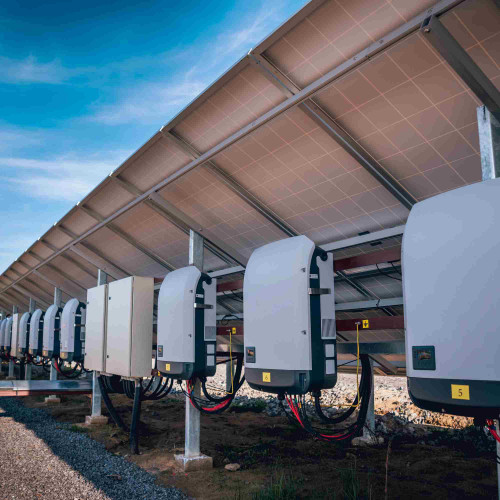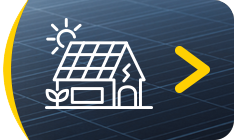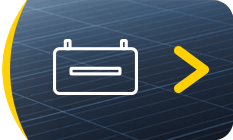- 27 Sep, 2017
- Solar Training , Products

A solar inverter is a key part of your solar installations. It links the two power sources: the solar panels, which produce direct current, and the power grip with alternate current. The choice of the inverter is an important one. It depends on how you want to use your solar power. There are a certain amount of factors to be taken into account in order to optimize your power output.
The right power
On the inverter data sheets, you will find (at least) two types of power indicated: nominal power and peak power. The nominal value corresponds to the maximum power that the inverter can deliver continuously over the long term. To calculate the nominal power you will need, add the nominal power of your electrical appliances that may operate at the same time. The total must not exceed the nominal power of the inverter.
As for the peak power, this is the maximum power that an inverter can deliver for a few seconds (5 in principle). It is in a way its ability to respond to the high starting currents of certain appliances such as refrigerators, freezers... According to the same logic as before, the peak power of the inverter must be higher than the sum of the starting powers of the appliances likely to start at the same time AND the nominal power of the appliances operating continuously.
Once these calculations have been made, a margin of 20% should still be provided. Some will advise you to oversize your inverter, in case you have to connect other consumers later. Be careful not to exaggerate this during this period in order to optimize your performance.
The right voltage
The DC input voltage must be higher than that of the generator (solar panels) and the battery. The output voltage must correspond to that of the devices used, in principle 220/230 V.
Efficiency
The efficiency of an inverter is the ratio between the useful power and the absorbed power of the converter, i.e. the power it consumes for its own operation. This efficiency varies in principle between 95 and 98%.
Signal forms and inverter types
There are "Pure Sinus" inverters that produce a sinusoidal signal similar to that of the electrical grid, and "Pseudo Sinus" inverters. A third type of square wave inverter is also on the market but offers a low quality signal and can only be used for small loads.
It is in particular in this choice of inverter type that the use you will make of your installation is taken into account. Ideally, it is the inverters that deliver a pure sine wave that offer optimal operation. But for some devices, a pseudo sinusoidal wave may be sufficient, such as light bulbs, computers or a TV. Another criterion to take into account is the price, since "Pseudo Sinus" inverters are in principle cheaper. Finally, if you have chosen to resell your electricity to the grid manager, prefer a specific inverter for grid coupling.
Transformer, yes or no?
The last choice to make will be to use an inverter with or without a transformer. On this subject, opinions differ. The transformer isolates the grid and the photovoltaic field. It is therefore an additional security, which makes the system less exposed to overvoltages, whether they come from the network or solar panels. They are recommended for thin-film sensors and low-power systems.
However, the transformer induces a decrease in efficiency. Thus, some people prefer transformerless inverters that use other techniques to compensate for leakage currents, into the ground for instance.










